Page is loading ...
Page is loading ...
Page is loading ...
Page is loading ...
Page is loading ...
Page is loading ...
Page is loading ...
Page is loading ...
Page is loading ...
Page is loading ...
Page is loading ...
Page is loading ...
Page is loading ...
Page is loading ...
Page is loading ...
Page is loading ...
Page is loading ...
Page is loading ...
Page is loading ...
Page is loading ...
Page is loading ...
Page is loading ...
Page is loading ...
Page is loading ...
Page is loading ...
Page is loading ...
Page is loading ...
Page is loading ...
Page is loading ...
Page is loading ...
Page is loading ...
Page is loading ...
Page is loading ...
Page is loading ...
Page is loading ...
Page is loading ...
Page is loading ...

38
GB
Before installing and using the appliance read this user's instruction book carefully. It contains safety
precautions, hints, information and ideas. If the refrigerator is used in compliance with the instructions
written, it will operate properly and provide you with greatest satisfaction.
The symbols below help you to find things more easily:
Safety precautions
Warnings and information at this symbol serve safety for you and your appliance.
Hints, useful information
Environmental information
Symbol for ideas
At this symbol ideas can be found according to food and its storing.
The symbol on the product or on its packaging indicates that this product may not be treated as
household waste. Instead it shall be handed over to the applicable collection point for the recycling
of electrical and electronic equipment. By ensuring this product is disposed of correctly, you will
help prevent potential negative consequences for the environment and human health, which could
otherwise be caused by inappropriate waste handling of this product. For more detailed information
about recycling of this product, please contact your local city office, your household waste dispos-
al service or the shop where you purchased the product.

39
GB
Important safety information ...................................................................................................................40
General safety precautions ......................................................................................................................40
Precautions for child safety ......................................................................................................................40
Safety precautions for installation ..............................................................................................................40
Safety precautions for isobutane ...............................................................................................................40
Instructions for the User ..........................................................................................................................41
General information .................................................................................................................................41
Description of the appliance, main parts......................................................................................................41
Instructions for the Installer.....................................................................................................................42
Technical data ........................................................................................................................................42
Transportation, unpacking ......................................................................................................................42
Cleaning .............................................................................................................................................42
Placement ...........................................................................................................................................43
Switch and indicators ............................................................................................................................44
Operation and use ................................................................................................................................44
Installation ...........................................................................................................................................44
Adjusting the temperature ......................................................................................................................44
Freezing ..............................................................................................................................................45
Storing ................................................................................................................................................45
Some useful information and advice ..........................................................................................................45
Hints and ideas ......................................................................................................................................45
How to save energy ..............................................................................................................................45
The appliance and environment ..............................................................................................................45
Maintenance ..........................................................................................................................................46
Defrosting ...........................................................................................................................................46
Regular cleaning ..................................................................................................................................46
When the refrigerator is not in use ...........................................................................................................47
Trouble shooting .....................................................................................................................................47
Change of door opening direction ...........................................................................................................48
Electrical connection ............................................................................................................................48
Storage time chart ..................................................................................................................................49
Warranty and service ..............................................................................................................................49
Guarantee conditions ..............................................................................................................................49
Service and spare parts ..........................................................................................................................49
Cont
Cont
ents
ents

40
GB
General safety precautions
Keep these instructions and they should remain at
the appliance when moving away or changing
owner.
This appliance is designed for storing and freezing
food, domestic use according to these instructions
only.
Specialised companies that are qualified to do so by
the manufacturer must carry out service and repairs
including repairing and changing the power cord.
Accessory parts supplied by them should be used
only for repairing. Otherwise the appliance can be
damaged or can cause other damage or injury.
The appliance is out of circuit only in that case if the
plug is removed from the socket. Before cleaning
and maintenance always unplug it (do not get it by
the cable). If the socket is difficult to reach, switch off
the appliance by cutting off the current.
Power cord must not be lengthened.
Make sure that the power plug is not squashed
or damaged by the back of the fridge/freezer.
- A damaged power plug may overheat and cause a
fire.
Do not place heavy articles or the fridge/freezer
itself on the power cord.
- There is a risk of a short circuit and fire.
Do not remove the power cord by pulling on its
lead, particularly when the fridge/freezer is being
pulled out of its niche.
- Damage to the cord may cause a short-circuit, fire
and/or electric shock.
- If the power cord is damaged, it must be replaced
by a certified service agent or qualified service
personnel.
If the power plug socket is loose, do not insert
the power plug.
- There is a risk of electric shock or fire.
When cleaning, defrosting, taking out frozen food or
ice tray do not use sharp, pointed or hard devices, as
they can cause damage to the appliance.
Be careful not to allow liquids to the temperature
control, switch gear and indicator respectively.
Ice and ice-cream can cause hurt if they are eaten
immediately after removal from the frozen food com-
partment.
After dissolving frozen food must not be refrozen, it
must be used up as soon as possible.
Store pre-packed frozen food in accordance with the
frozen food manufacturer's instructions.
You must not make defrosting faster with any electric
heating appliance or chemicals.
Do not make hot pot touch the plastic parts of the
freezer.
Warning: if you place frozen foods on top of the prod-
uct, the interaction of cold and vapor may produce
water condensate in the space below the top. If such
water condensate drips on the electric components
placed in that space, a short-circuit may occur and
damage the product. Therefore it is forbidden to
place frozen foods on top of the product.
Do not store flammable gas and liquid in the
appliance because they may explode.
Do not put carbonated drinks, bottled drinks and
bottled fruits into the freezer.
Precautions for child safety
Do not allow children to play with the packaging of
the appliance. Plastic foil can cause suffocation.
Adults must handle the appliance. Do not allow
children to play with it or its controlling parts.
If you are discarding the appliance pull the plug
out of the socket, cut the connection cable (as
close to the appliance as you can) and remove
the door to prevent playing children to suffer elec-
tric shock or to close themselves into it.
This appliance is not intended for use by persons
(including children) with reduced physical sensory or
mental capabilities, or lack of experience and knowl-
edge, unless they have been given supervision or
instruction concerning use of the appliance by a per-
son responsible for their safety.
Safety precautions for installa-
tion
Put the appliance to the wall to avoid touching or
catching warm parts (compressor, condenser) to
prevent possible burn.
When moving the appliance take care of the plug
not to be in the socket.
When placing the appliance take care not to
stand it on the power cord.
Adequate air circulation should be around the
appliance, lacking this leads to overheating. To
achieve sufficient ventilation follow the instruc-
tions relevant to installation.
Safety precautions for isobu-
tane
Warning
The refrigerant of the appliance is isobutane
(R600a) that is inflammable and explosive to a
greater extent.
Keep ventilation openings, in the appliance enclo-
sure or in the built-in structure, clear of obstruc-
tion.
Do not use mechanical devices or other means to
accelerate the defrosting process, other than
those recommended by the manufacturer.
Do not damage the refrigerant circuit.
Do not use electrical appliances inside the food
storage compartments of the appliance, unless
they are of the type recommended by the manu-
facturer.
For the safety of life and property keep the
precautions of these user's instructions as
the manufacturer is not responsible for dam-
ages caused by omission.
Im
Im
por
por
t
t
ant saf
ant saf
et
et
y inf
y inf
ormation
ormation

41
GB
General information
The official designation of the appliance is home freez-
er. According to this the appliance is suitable for storing
frozen and deep-frozen food, freezing products in
quantity given in the user's instructions at home and
making ice.
The appliance can meet the requirements of stan-
dards between different temperature limits accord-
ing to the climate class. The letter symbol for climate
class can be found on the data plate.
Ins
Ins
tr
tr
uctions f
uctions f
or the User
or the User
Description of the appliance, main parts
1. Freezing compartment
2. Storage compartments
3. Data plate
4. Switches and indicators
5. Defrost water drain
6. Adjustable feet
7. Door sealing gasket
8. Ventilation grid
9. Condenser
10. Airflow direction
11. Compressor

42
GB
Technical data
Ins
Ins
tr
tr
uctions f
uctions f
or the Ins
or the Ins
t
t
aller
aller
Model
Gross capacity (l)
Net capacity (l)
Width (mm)
Height (mm)
Depth (mm)
Energy consumption (kWh/day)
(kWh/year)
Energy class, according to EU Standards
Freezing capacity (kg/24h)
Rising time (h)
Rated current (A)
Weight (kg)
OP 92 GSA++
110
92
595
850
635
0,363
132
A++
14
24
0,7
38
Transportation, unpacking
It is recommended to deliver the appliance in
original packaging, in vertical position consider-
ing the protective warning on packaging.
After each transportation the appliance must not be
switched on for approx. 4 hours.
Unpack the appliance and check if there are damages
on it. Report possible damages immediately to the
place you bought it. In that case retain packaging.
Cleaning
Remove every adhesive tape, which ensure the parts
not to move in the appliance.
Wash the inside of the appliance using lukewarm water
and mild detergent. Use soft cloth.
After cleaning wipe out the inside of the appliance.

43
GB
Placement
The ambient temperature has an effect on the energy
consumption and proper operation of the appliance.
When placing, take into consideration that it is practical
to operate the appliance between ambient temperature
limits according to the climate class that is given in the
chart below and can be found in the data label.
Class of climate Ambient temperature
SN +10 ... +32 °C
N +16 ... +32 °C
ST +16 ... + 38 °C
T +16 ... + 43 °C
If the ambient temperature goes below the lower data
the temperature of the cooling compartment can go
beyond the prescribed temperature.
If the ambient temperature goes beyond the upper data
this means longer operating time of the compressor,
increasing temperature in the freezer or increasing
energy consumption.
When placing the appliance ensure that it stands level.
This can be achieved by two adjustable feet (1) at the
bottom in front. 1-1 piece of distance washers (2) are
accessories of the adjustable feet. If levelling the appli-
ance requires, these washers can be removed.
Do not stand the appliance on a sunny place or close to
a radiator or cooker.
If it is unavoidable because of furnishing and the appli-
ance has to be stood near a cooker take these mini-
mum distances into consideration:
In case of gas or electric cooker 3 cm must be left,
when it is less put a 0,5 - 1 cm non-flam insulation
between the two appliances.
In case of oil or coal-fired stove the distance must be
30 cm since they give off more heat.
The refrigerator is designed to operate when it is totally
pushed to the wall.
When placing the refrigerator keep minimal dis-
tances recommended in figure.
A : placing it under a wall-cupboard
B : placing it freely

44
GB
Switch and indicators
A)On/off indicator green
B)Thermostat and on/off switch
C)Quick freeze indicator yellow
D)Acoustic signal stop and quick freeze switch
E) Alarm indicator red
Operation and use
Installation
Insert the plug into the socket. In order to switch on the
product, turn the thermostat (B) to a temperature lower
than << 1 >>. The green indicator will light up and the
red indicator will blink. The lighting up of the on/off indi-
cator (A) means that the product is switched on. The
blinking of the red indicator means an improper temper-
ature in the freezing compartment. In addition, an inter-
mittent sound can be heard, which can be stopped by
pressing button (D) once. You can switch off the freez-
er by turning the thermostat (B) in position << >>.
Adjusting the temperature
The internal temperature of the freezer is regulated
electronically through five temperature positions and a
switch-off << >> setting.
Position << 1 >> indicates the highest (least cold) tem-
perature, while position << 6 >> is for the lowest (cold-
est) temperature. Rotate the thermostat in the desired
position.
In general, it is best to set the thermostat to << 2-3 >>
but, for the purpose of temperature setting, you should
also consider
the temperature of the room where the product is
installed,
the frequency of door openings,
the volume of food to be stored in the product,
the location of the product.
Therefore, you should consider all these factors and
you may have to do some testing for finding the best
temperature. If you want a lower temperature, turn the
thermostat into a position of higher number or, vice
versa, if you need a higher temperature, you should set
a position of lower number. Please allow 24 hours for
the freezer temperature to stabilize between two adjust-
ments.
Alarm (red) indicator
The temperature alarm indicator (E) will light up when
the internal temperature of the freezer increases to a
level (above -12°C) where the long-term conservation
of the foods in not ensured. Please note that, when
switching on the freezer for the first time, the alarm indi-
cator will blink until the internal temperature has
reached a level required for the safe conservation of
frozen food.

45
GB
Temperature problem:
Under normal operating conditions, the internal temper-
ature of the freezer will ensure the long-term conserva-
tion of the stored food. When such temperature rises
above a certain level (-12°C), it will trigger an acoustic
and light alarm. The light alarm is a continuous red light
(E), while the acoustic alarm is an intermittent sound.
You can stop the acoustic alarm by pressing switch (D)
once.
Freezing
Freezing different products should always be done in
the freezing compartment after proper preparation.
Move frozen food from the top drawer into the other two
drawers. For maximum freezing performance remove
the top drawer and then place the foods to be frozen
directly on the evaporator. In case of freezing smaller
food volumes you do not need to remove the drawer.
For using the quick freeze function, press the quick
freeze on/off switch (D) for 2-3 seconds; in the case of
small and great food volumes you should do it approx.
4 and 24 hours, respectively, before you want to freeze
the fresh food. The yellow indicator (C) will light up. The
compressor will operate continuously until the product
reaches the freezing temperature.
Once the food is completely frozen (it may take up to 24
hours) you can manually switch off the quick freeze
function by pressing the switch (D) for 2-3 seconds. If
not switched off manually, the quick freeze function will
be automatically switched off 48 hours later. The yellow
indicator (C) will also go out.
Move the fresh frozen food into the top drawer and
insert the drawer in the appliance in its working posi-
tion.
Storing
It is practical to replace frozen products into the storing
compartments after freezing has finished so that to
make room in the freezing compartment for another
freezing.
In large quantities of food are to be stored, remove the
baskets except the lowermost one from appliance and
place food on the shelves.
Intermediate freezing does not deteriorate foods
already stored.
Some useful information and
advice
After opening and closing the door of freezer vac-
uum will rise inside the appliance because of the
low temperature. So wait 2-3 minutes after closing
the door - if you want to open it again - while inner
pressure equalises.
Take care of operating the freezer at a position of
thermostatic control so that the inside temperature
can never go beyond -18°C, since temperature
higher than this can deteriorate frozen foods.
It is practical to make sure of faultless operation of
the appliance daily so as to notice possible failure
in time and prevent deterioration of frozen foods.
After a power failure the product will restart and
the quick freeze function will be switched on.
Hints and ideas
In this chapter practical hints and ideas are given
about how to use the appliance to reach maximum
energy saving and there is environmental informa-
tion about the appliance as well.
How to save energy
Avoid putting the appliance in a sunny place and
near anything that gives off heat.
Be sure that the condenser and the compressor
are well ventilated. Do not cover the sections
where ventilation is.
Wrap products in tightly closing dishes or cling film
to avoid building up unnecessary frost.
Avoid products put in the freezer compartment to
touch foods already frozen.
Do not leave the door open longer than necessary
and avoid unnecessary openings.
Put warm foods into the appliance only when they
are at room temperature.
The condenser must be kept clean.
The appliance and environment
This appliance does not contain gasses which could
damage the ozone layer, in either its refrigerant cir-
cuit or insulation materials. The appliance shall not
be discarded together with the urban refuse and rub-
bish. Avoid damaging the cooling unit, especially at
the rear near the heat exchanger. Information on
your local disposal sites may be obtained from your
municipal authorities.
The materials used on this appliance marked with
the sympol are recyclable.

46
GB
Maintenance
Defrosting
Bleeding part of the moisture of cooling chamber in
form of frost and ice goes with the operation of the
appliance.
Thick frost and ice has an insulating effect, so it
reduces cooling efficiency as the temperature increas-
es, it needs more energy, at a certain thickness it does
not allow the door of the freezing compartment to open,
possibly the door can be broken.
It is possible to scrape off and remove smaller frost and
ice with the enclosed ice scraper.
The tray in figure is not a piece of accessories to the
appliance!
When ice coating is so thick that it can not be removed
with the frost scraper defrosting is necessary. Its fre-
quency depends on usage.
How to defrost it:
Disconnect the appliance from the electrical supply. If
the plug is not accessible turn the temperature control
knob to "0" position.
Take the frozen foods out of the appliance and put them
into a basket lined with paper or cloth. Store them in a
possibly cool place or replace them into a frozen or
fresh food compartment of a refrigerator.
Leave the door open.
Sweep off the melting water occasionally with a cloth or
sponge in direction of sides which gathers in the outlet
channel practically formed in the bottom of the appli-
ance and can be removed as follows:
Put a tray high enough in front of the appliance. Insert
the plastic scraper into the defrost water outlet accord-
ing to the picture. Defrost water will flow into the tray
through the outlet.
Defrosting process can be made quicker by placing a
pot or dish filled with warm water to the cooling plate
formed as a shelf.
After defrosting wipe the surfaces and push defrost
water outlet back.
Apply voltage to the appliance.
Turn the temperature control knob to a medium position
and leave to run.
After the red light has gone out put the foods back.
Regular cleaning
It is practical to clean the inside of the freezer and
defrost it at a time.
Household cleaner or soap must not be used.
After breaking the circuit wash the appliance using luke-
warm water and wipe it.
Clean the door gasket with clean water.
After cleaning apply voltage to the appliance.
It is recommended to remove the dust and dirt collect-
ed on the back of the appliance and the condenser
once or twice a year.

47
GB
Problem
The appliance does not cool
sufficiently
The appliance cools too hard
The appliance does not cool
at all
The appliance is noisy
Green indicator flashing
Possible cause
Thermostatic control is set too low.
Before freezing the appliance was not precooled
sufficiently.
Large-sized food was put in.
Too many foods to be frozen were put in.
Warm foods were put in.
Door is not shut properly.
The thermostatic control is set too high.
Plug is not connected to the mains socket proper-
ly.
There is no voltage in the mains socket.
Thermostat set to "0" position.
The appliance is not supported properly.
Temperature sensor problem.
Solution
Set higher position.
Pre-cool the appliance for enough time.
Cut up food.
Put fewer foods to be cooled.
Put foods max. at room temperature.
Check if the door is shut.
Set lower position.
Check if the connection is proper.
Check if there is voltage.
Check thermostat setting.
Check if the appliance stands stable (all the four
feet should be on the floor).
Call the service personnel.
As much as the advice does not lead to result, call the nearest brand-mark service.
Operation failure
When the electronic system fails to detect the ACTUAL temperature, the alarm indicator will start to flash. The
product will continue to operate with the use of a reserve system until the problem is eliminated by the local serv-
ice personnel.
When the refrigerator is not in use
If you do not use the product for longer periods, make
sure to perform the following:
Set the thermostat to position << >>.
Disconnect the product from the mains.
Remove all foods from the product.
Perform defrosting and cleaning operations as
described above.
Leave the doors ajar to avoid the build-up of unpleasant
odors.
Trouble shooting
During operation of the appliance some smaller but
annoying trouble can often occur, which does not
require calling a technician out. In the following chart
information is given about them to avoid unneces-
sary charges on service.
We draw your attention that operation of appliance
goes with certain sounds (compressor- and circulat-
ing sound). This is not trouble, but means normal
operation.
We draw it to your attention again that the
appliance operates discontinuously, so the
stopping of compressor does not mean being no-
current. That is why you must not touch the electrical
parts of the appliance before removing it from the
mains socket.

48
GB
Change of door opening direction
Should the setting-up place or handling demand it,
door-opening direction can be refitted from right-handed
to left-handed.
Following operations are to be done on the basis of fig-
ures and explanations:
Break the circuit of the appliance.
Tilt back the appliance carefully so that the compres-
sor can not touch the floor. It is recommended to ask
another person for help, who can keep the appliance
at this position safely.
Unscrew the adjustable feet situated on both sides
(2 pieces), in addition the screws fixing the lower
door holders (2 pieces) and the screw on the other
side respectively.
Take off the freezer door by pulling it slightly down-
wards.
Unscrew the top door hinge pin of the refrigerator
then screw it back on the other side.
Fit the freezer door on the upper door hinge pin.
Put over the pin in the lower door holding plate in the
direction of the arrow.
Take the door off.
Unscrew the top door holding pin and put it on the
other side.
Put over the handles on the other side and put the
plastic covering nails supplied in the plastic bag of
this instruction book into the holes set free.
Put the appliance to its place, set it level and apply
voltage to it.
In case you do not want to perform the procedures
above, call the nearest brand-mark service.
Technicians will accomplish the refitting expertly for
charge.
Electrical connection
This refrigerator is designed to operate on a 230-
240 V AC (~) 50 Hz supply.
The plug must be put into a socket with protective
contact. If there is no such, it is recommended to
get an electrician to fit an earthed socket in compli-
ance with standards near the refrigerator.
This appliance complies with the following
E.E.C. Directives:
- 73/23 EEC of 19.02.73 (Low Voltage Directive) and
subsequent modifications,
- 89/336 EEC of 03.05.89 (Electromagnetic
Compatibility Directive) and subsequent modifica-
tions.
- 96/57 EEC - 96/09/03 (Energy Efficiency Directive)
and its subsequent amendments

49
GB
W
W
ar
ar
r
r
ant
ant
y and ser
y and ser
vice
vice
Guarantee conditions
Service and spare parts
If calling the service is unavoidable, announce the trou-
ble at a brand-mark service nearest to your place.
When announcing the appliance has to be identified
according to its data label.
The data label of the appliance is stuck to the wall of
the interior beside the vegetable box in the fresh food
compartment in the bottom on the left side. All neces-
sary data are there which are needed to the service
announcement (type, model, serial number, etc.). Note
here the data from the data label of your appliance:
Model
Product No.
Serial No.
Date of purchase:
The manufacturer reserves the right to make any changes in the products.
Foods In the **** frozen food
compartment -18°C
Vegetables:
green beans, green peas, mixed vegetables, marrow, corn, etc. 12 months
Ready-cooked foods:
vegetable dish, trimmings, with meat, etc. 12 months
Ready-cooked foods:
sirloin steaks, stew from knuckle of ham, meat from pig pudding, etc. 6 months
Foods from potatoes, pasta:
mashed potato, gnocchi, dumpling, pasta filled with jam, chips 12 months
Soups:
meat-broth, soup from green beans, soup from green peas, etc. 6 months
Fruits:
sour cherry, cherry, gooseberry, fruit cream, mashed maroon 12 months
Meat:
chicken, duck, goose 5 months
fillets, tuna fish 6 months
Popsicle, ice-cream 3 weeks
S
S
t
t
or
or
age time char
age time char
t
t
Storage time of deep-frozen and frozen products
Page is loading ...
Page is loading ...

Info Service
Postfach 2550, 4002 Basel
Info-Tel. 0848 888 444*
www.coop.ch
*Nationaler Tarif/Tarif national/Tariffa nazionale
Servicestelle Wangen
Postfach
4612 Wangen bei Olten
Fax 062 206 33 12
Service après-vente
Ch. Veyre-d’en Haut
1806 St-Légier
Fax 021 652 37 88
Service-Hotline 0848 811 222
-
 1
1
-
 2
2
-
 3
3
-
 4
4
-
 5
5
-
 6
6
-
 7
7
-
 8
8
-
 9
9
-
 10
10
-
 11
11
-
 12
12
-
 13
13
-
 14
14
-
 15
15
-
 16
16
-
 17
17
-
 18
18
-
 19
19
-
 20
20
-
 21
21
-
 22
22
-
 23
23
-
 24
24
-
 25
25
-
 26
26
-
 27
27
-
 28
28
-
 29
29
-
 30
30
-
 31
31
-
 32
32
-
 33
33
-
 34
34
-
 35
35
-
 36
36
-
 37
37
-
 38
38
-
 39
39
-
 40
40
-
 41
41
-
 42
42
-
 43
43
-
 44
44
-
 45
45
-
 46
46
-
 47
47
-
 48
48
-
 49
49
-
 50
50
-
 51
51
-
 52
52
Ask a question and I''ll find the answer in the document
Finding information in a document is now easier with AI
in other languages
- italiano: Satrap OP92GSA++ Manuale utente
- français: Satrap OP92GSA++ Manuel utilisateur
- Deutsch: Satrap OP92GSA++ Benutzerhandbuch
Related papers
-
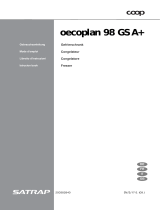 Satrap OECOPLAN 98 GS A+ User manual
Satrap OECOPLAN 98 GS A+ User manual
-
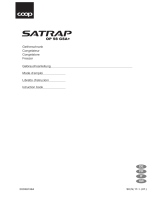 Satrap OECOPLAN 98 GS A+ User manual
Satrap OECOPLAN 98 GS A+ User manual
-
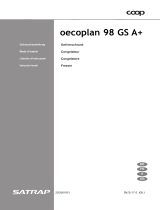 Satrap OP98GSA+ User manual
Satrap OP98GSA+ User manual
-
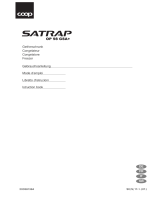 Satrap OP98GSA+ User manual
Satrap OP98GSA+ User manual
-
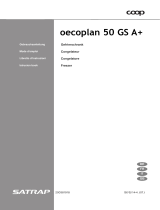 Satrap OECOPLAN50GSA+ User manual
Satrap OECOPLAN50GSA+ User manual
-
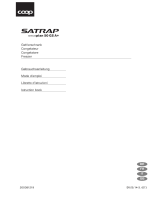 Satrap OECOPLAN50GSA+ User manual
Satrap OECOPLAN50GSA+ User manual
-
 Satrap OECOPLAN 50 GS A+ User manual
Satrap OECOPLAN 50 GS A+ User manual
-
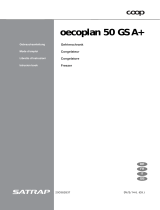 Satrap OECOPLAN 50 GS A+ User manual
Satrap OECOPLAN 50 GS A+ User manual
-
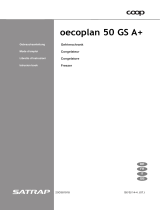 Satrap OECOPLAN 50 GS A+ User manual
Satrap OECOPLAN 50 GS A+ User manual
-
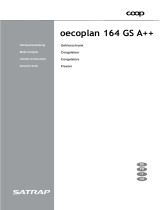 Satrap OP164GSA++ User manual
Satrap OP164GSA++ User manual
Other documents
-
Electrolux TG092 User manual
-
Zanussi ZFT810W User manual
-
Electrolux EUT11004W User manual
-
Aeg-Electrolux A70120GS4 User manual
-
Aeg-Electrolux A40190GS User manual
-
Zanussi ZFU319EW User manual
-
Electrolux EUT11004W User manual
-
Electrolux EUC 0550 User manual
-
Aeg-Electrolux A70120GS4 User manual
-
Electrolux EUT6259 User manual





























































